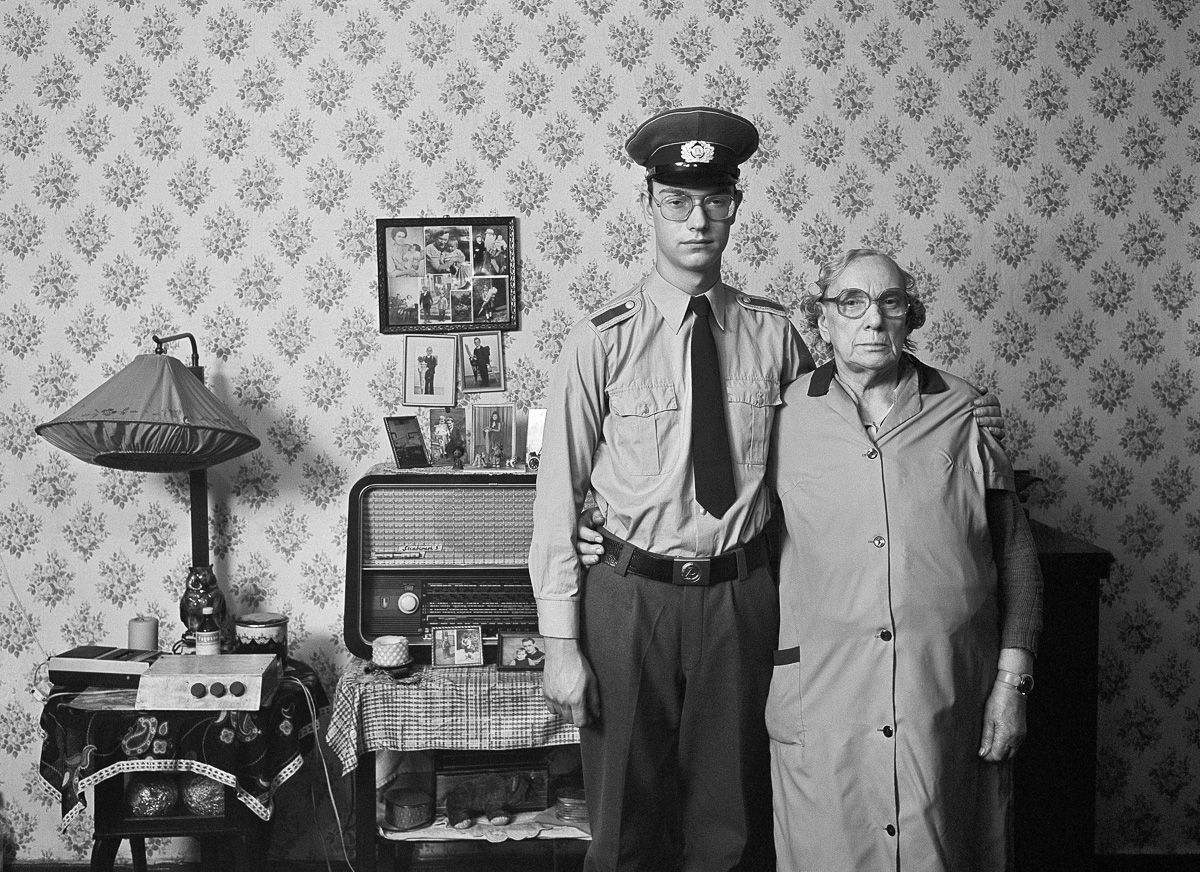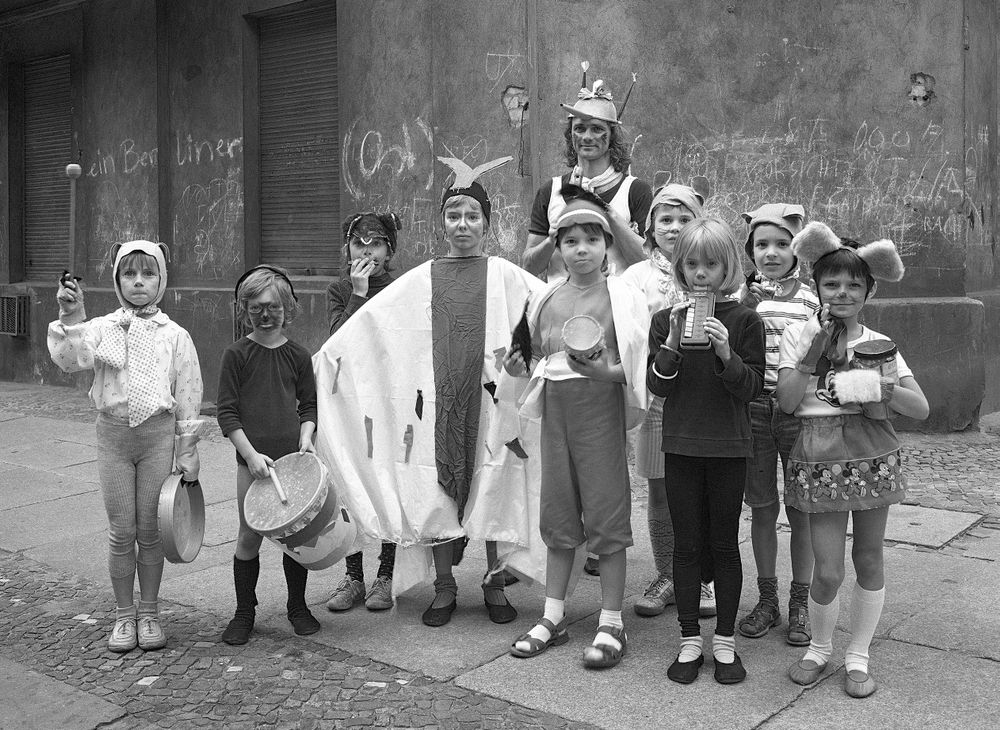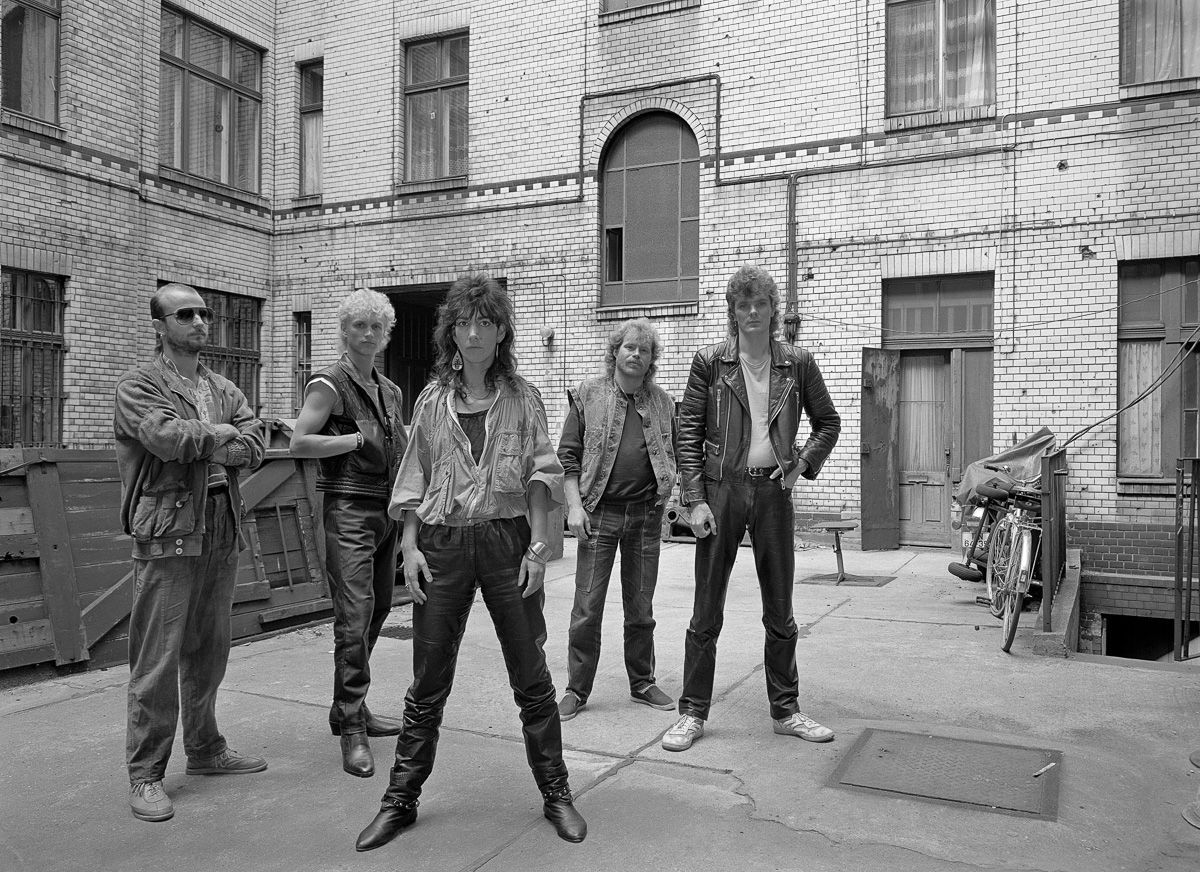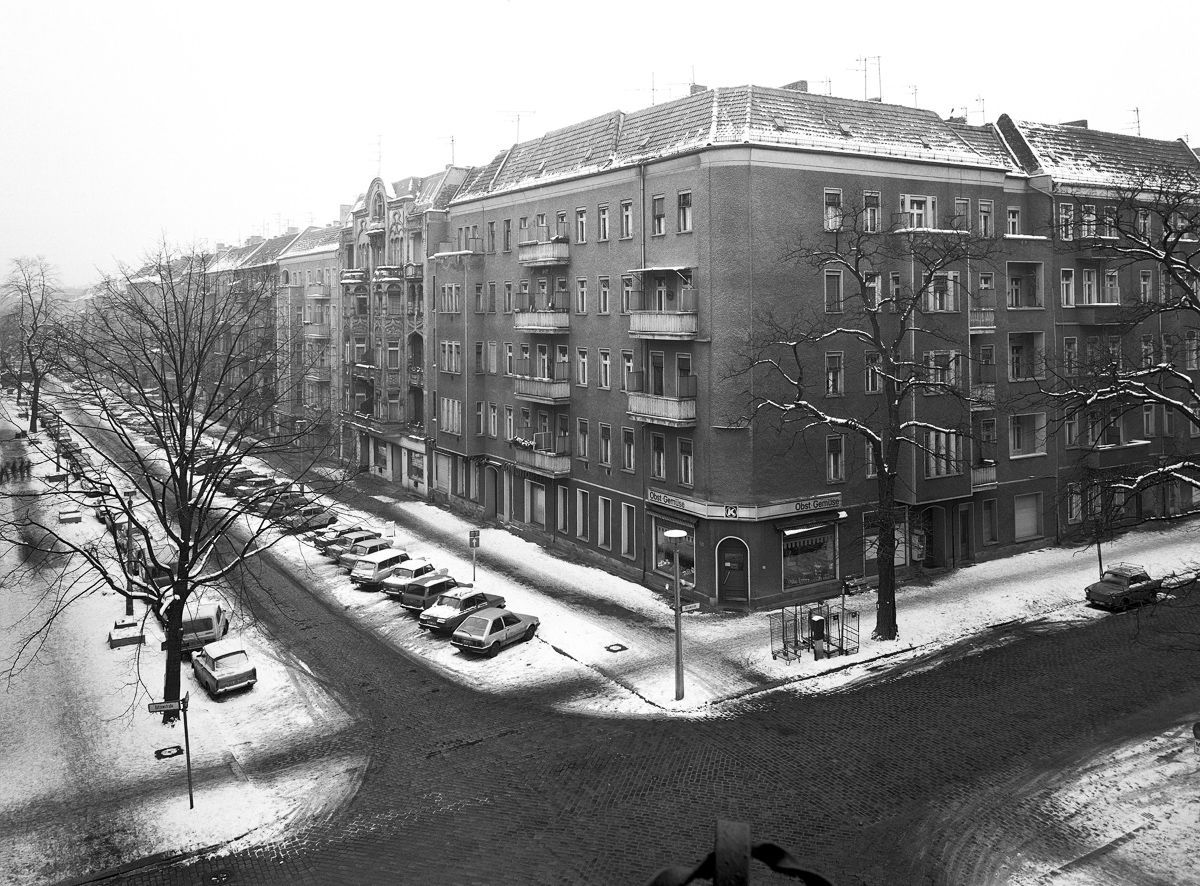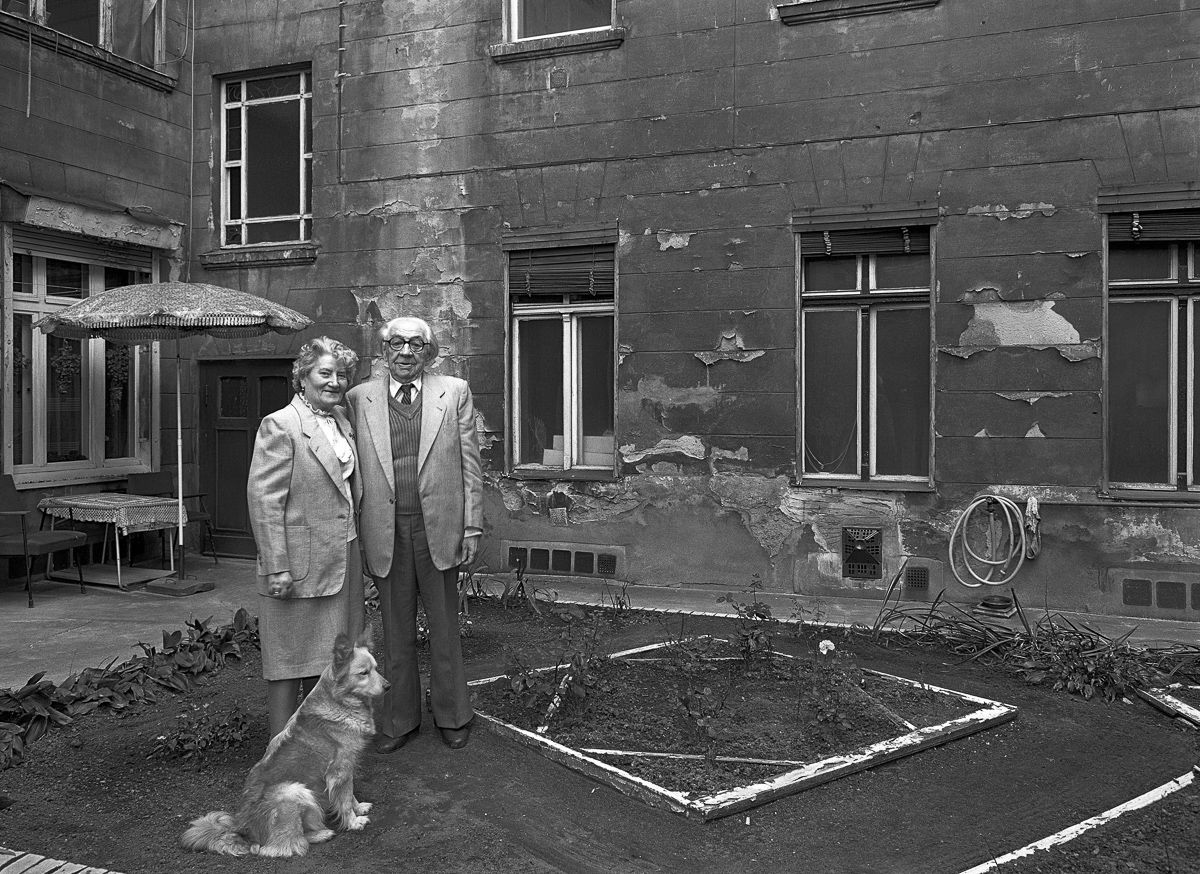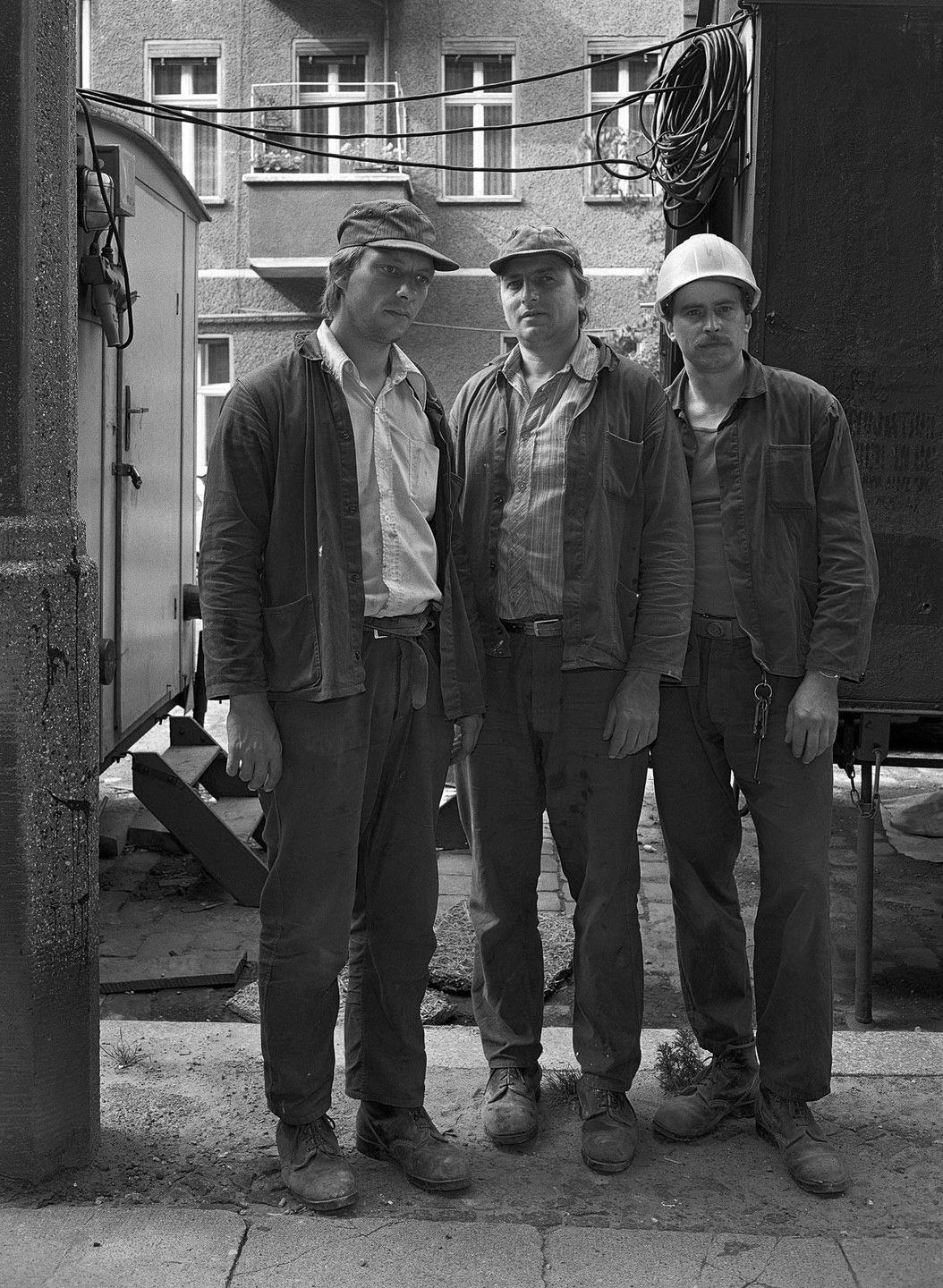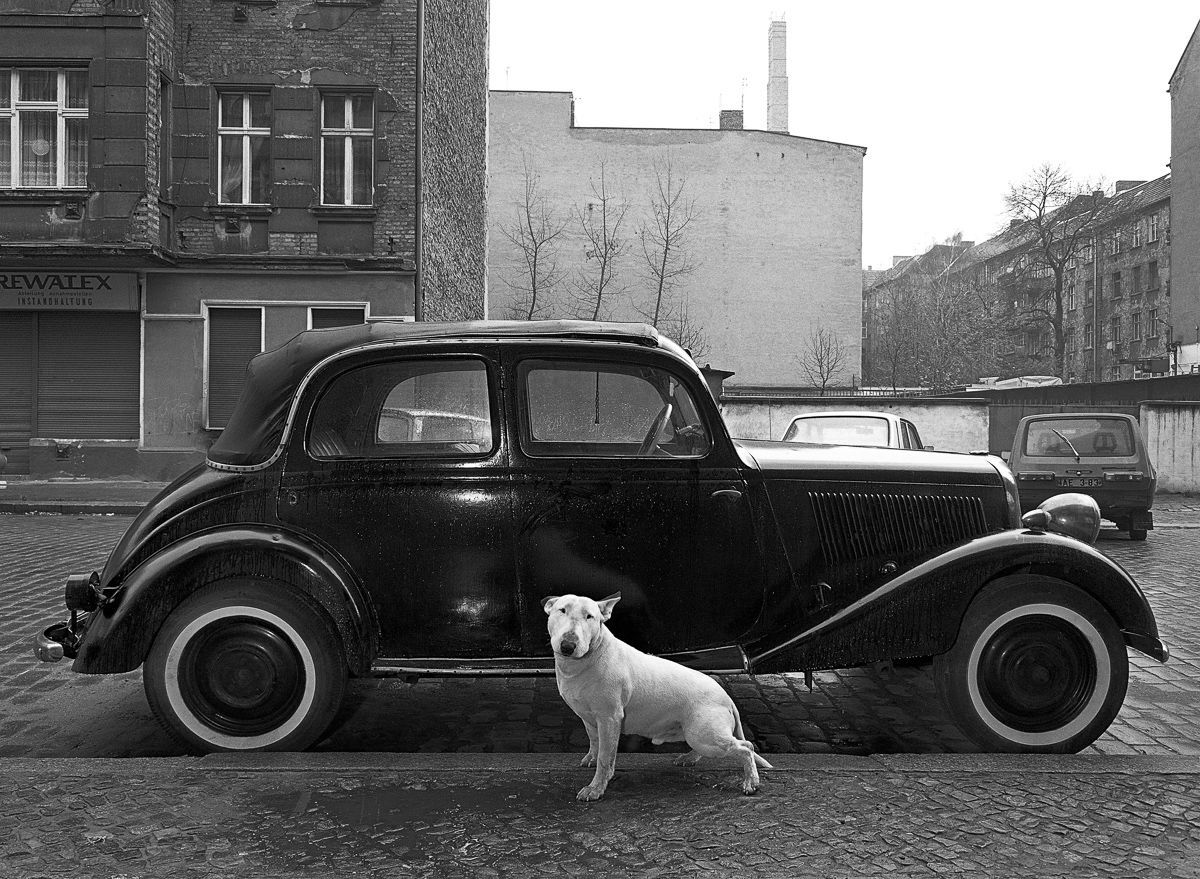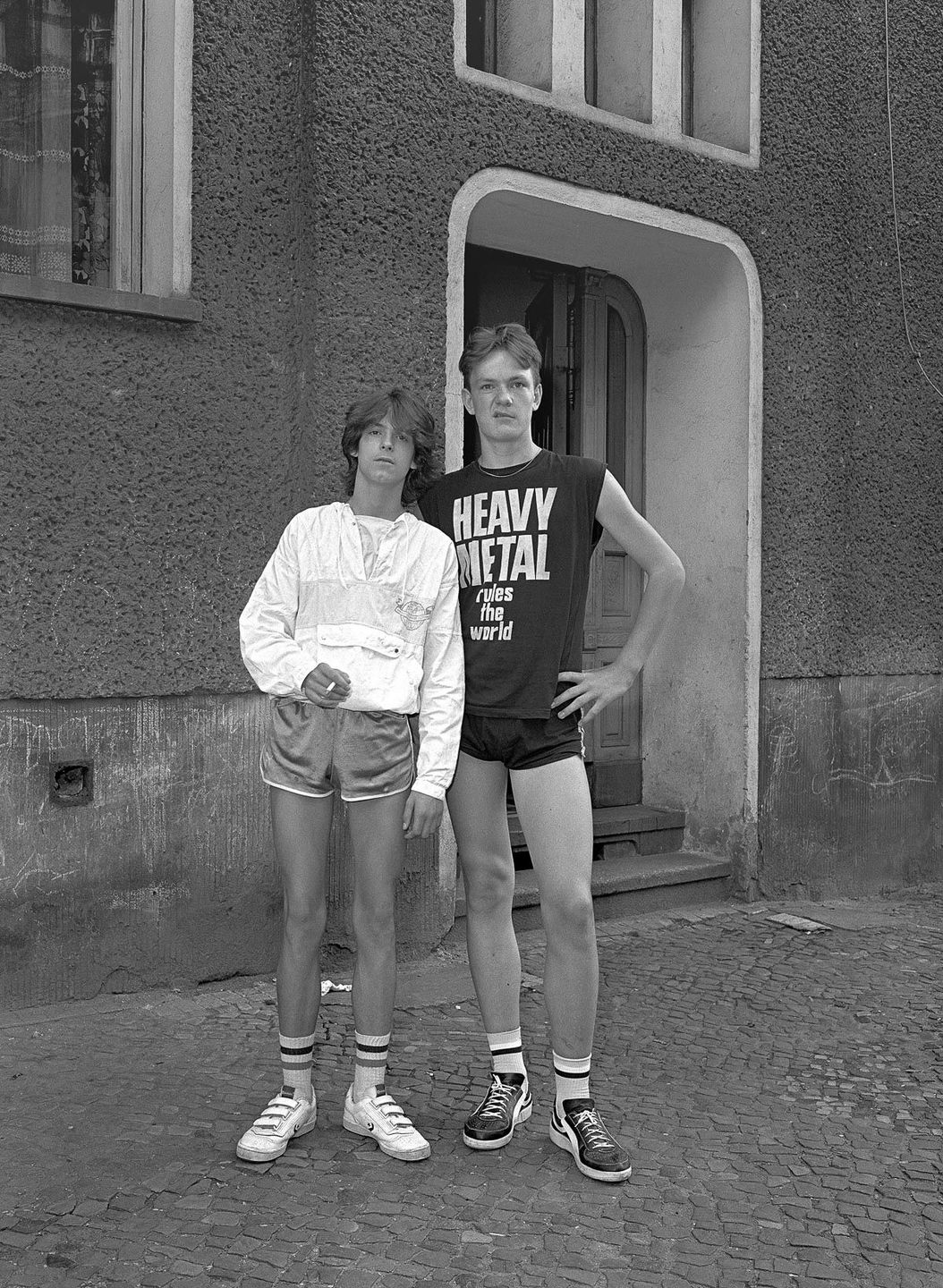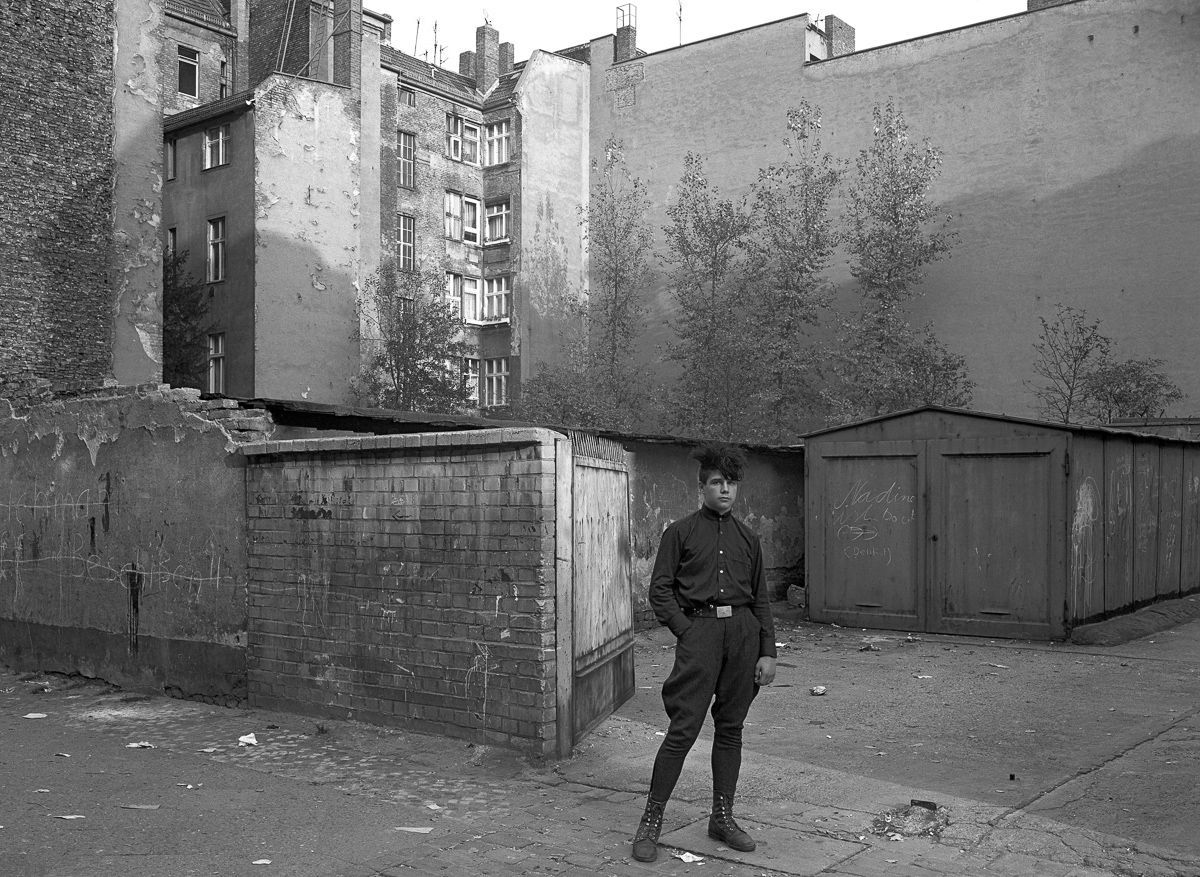“Everyone seemed to feel connected to the place and responsible for it, to be acting in tacit consensus and always working to save the diversity of their island from the sea of gray for as long as possible” – Harf Zimmermann
In 1981, Harf Zimmermann (born: Dresden 1955) moved into a flat on Hufelandstrasse, East Berlin. His photographs of life on an a street marked by roomy pre-war apartments, ornate foyers, linden trees and family-run business. Hufelandstrasse was a rare survivor from a bygone age of capitalism and color. “In a word, it was less gray,” Mr. Zimmermann said. “There was more color.”

Tomi, Silvy , Manuela, her sister Trixi, Uwe, and Tatjana, (from left). C/O Berlin Exhibition 2017 April 28th to July 2n
Hufelandstrasse’s look changed significantly during the decade he lived there, Mr. Zimmermann said. Many of the beautiful balconies that gave the apartment buildings their special character were removed in 1985 because of safety concerns. Later, when leaking gas lines polluted the soil, the linden trees died and were cut down. Mr. Zimmermann moved to nearby Mitte in 1991, seeking more space and a change of scenery. After a small gallery show in 1989, his photos of Hufelandstrasse sat untouched in a box for two decades.

Two painters from the cooperative “Decorative Construction and Living” finish painting the stairway entrance to my building, No. 31, 1987
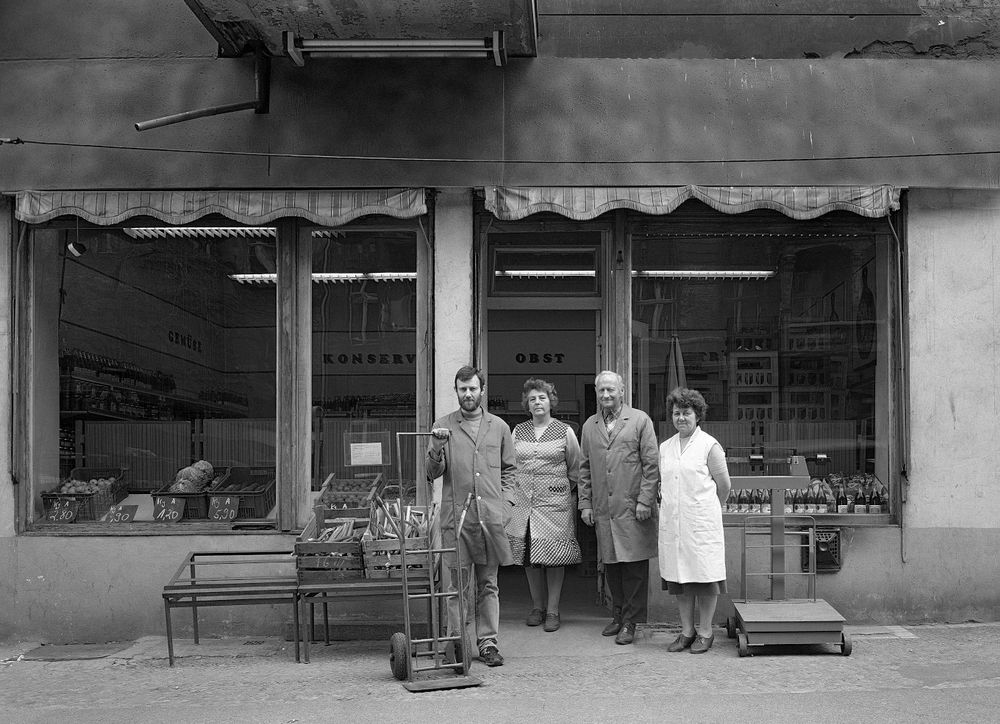
The Schramm family, father, mother and son, and their employee (second from left) in front of their fruit and vegetable shop, No. 3, 1986.
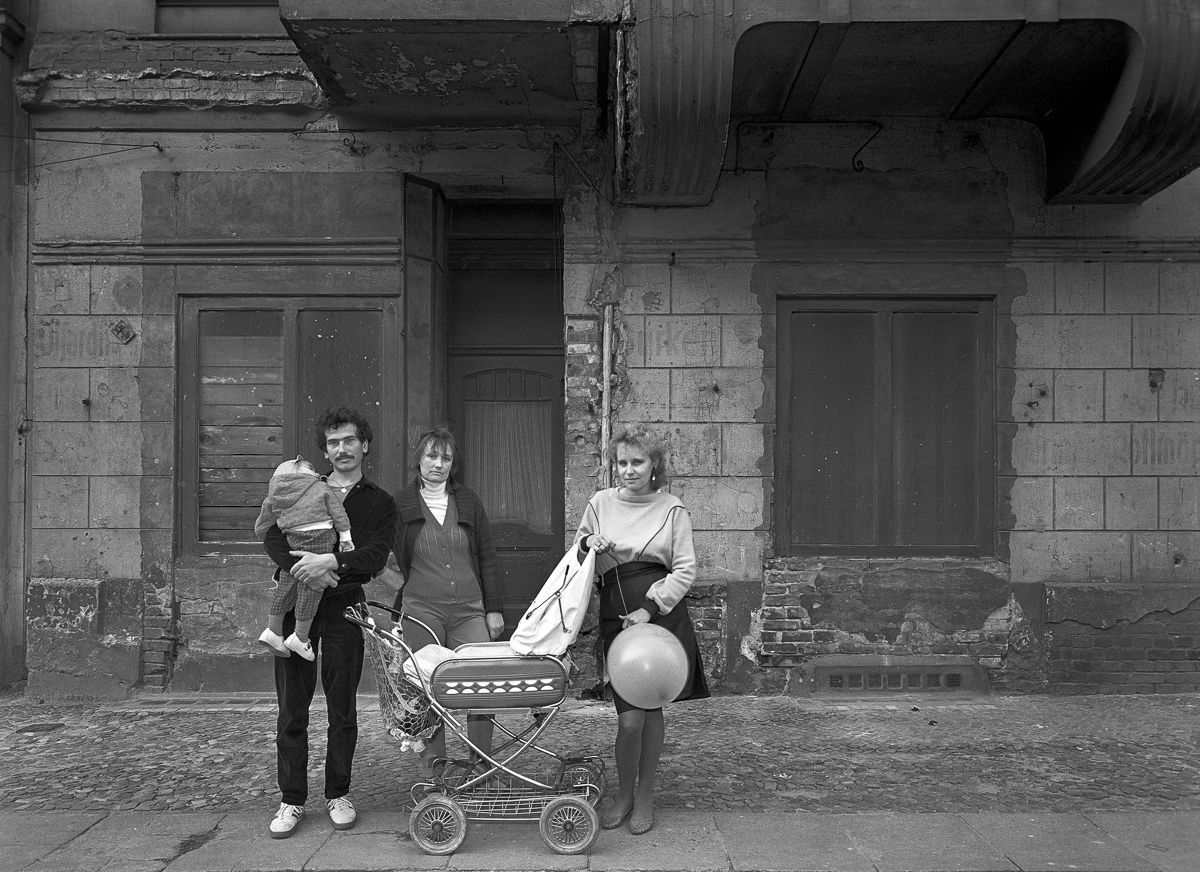
Frau Baer (center) with her daughter, her grandchild, and her daughter’s partner on the thirty-eighth anniversary of the founding of the GDR.

Beate (freelancer) with her daughter Henriette, her partner Matthias (freelancer) with his son Gregor, and their daughter Lilly.
Buy the book Hufelandstrasse, 1055 Berlin, published by Steidl.
Via: Lens Culture
Would you like to support Flashbak?
Please consider making a donation to our site. We don't want to rely on ads to bring you the best of visual culture. You can also support us by signing up to our Mailing List. And you can also follow us on Facebook, Instagram and Twitter. For great art and culture delivered to your door, visit our shop.
